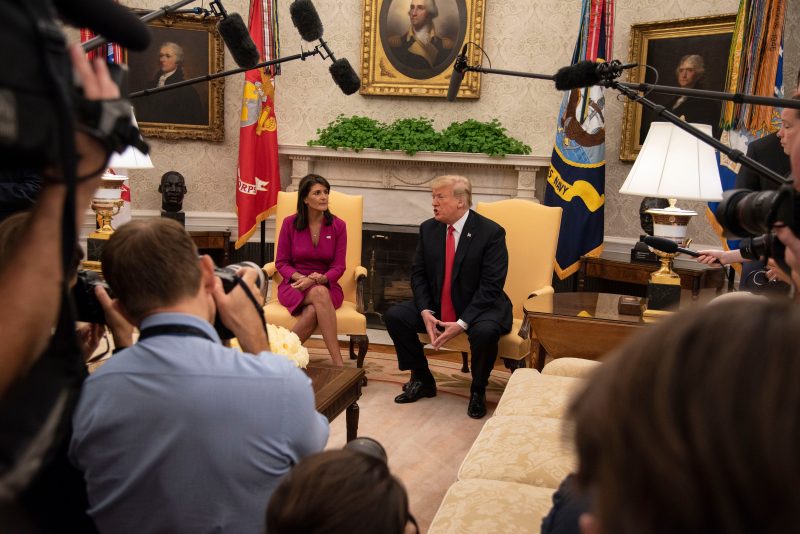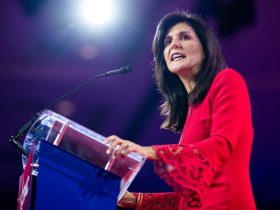The good news for Nikki Haley is that, despite her third-place finish in the Iowa caucus last week, it turns out she was right that this is now a “two-person race.” Florida Gov. Ron DeSantis ended his campaign Sunday afternoon, two days before the New Hampshire primary.
The bad news is that Haley probably won’t like how that two-candidate race shakes out — and it could be clear very quickly that this is, in actuality, a one-candidate race.
DeSantis becomes the third candidate to drop out in the last 11 days, following Chris Christie before Iowa and Vivek Ramaswamy the night of Monday’s caucuses. Apart from some little-known candidates, that distills it to the two-person campaign all of Donald Trump’s opponents have long aimed for.
But while there was once a time in which that two-person race looked promising — for DeSantis, at least — that is not the case today with Haley, Trump’s former United Nations ambassador.
Haley has always trailed significantly in hypothetical head-to-head matchups with Trump, as far back as last spring. And despite her momentum in New Hampshire — and to some degree nationally — that gap has grown.
The most recent national survey testing that situation, in mid-December from Yahoo News and YouGov, showed her trailing Trump 70 percent to 19 percent — a 51-point deficit. (Like other polling, it suggested DeSantis had slightly more hope in such a race, trailing by 34 points.)
The relatively few head-to-head polls we have show similarly overwhelming gaps in such a race.
Of course, Haley’s campaign hasn’t been at all competitive nationally. To the extent there is a path to victory, it’s in defeating Trump in New Hampshire and recasting the race from that point — ideally with another strong showing next month in Haley’s home state of South Carolina, where she was governor from 2011 to 2017.
The only recent poll we have directly testing Trump and Haley head-to-head in New Hampshire would seem significantly more promising for Haley. It’s from mid-December, and it showed Trump at 48 percent and Haley at 45 percent — a margin-of-error race. But it was from the outside group Americans for Prosperity, which had just endorsed Haley.
The picture was bleaker in a poll released Sunday from CNN and the University of New Hampshire. It already showed Trump nearing majority support and a clear victory. He led Haley 50-39 in a race that included DeSantis, who drew just 6 percent support.
But much of DeSantis’s meager vote share would seem headed Trump’s way; twice as many DeSantis supporters named Trump as their second choice (62 percent) than named Haley (30 percent). The would put Trump above 50 percent — just as he was in Iowa — and grow his already double-digit lead.
(We don’t have good recent nonpartisan polling in South Carolina. But Trump already has majority support there in virtually every poll, even in a more-crowded race, and a poll from his super PAC last week showed him leading Haley 68-28 head-to-head.)
The second-choice breakdown is similar in national polling, suggesting DeSantis’s exit should accrue to Trump’s benefit because DeSantis voters are predisposed toward Trump. DeSantis’s endorsement of Trump on Sunday could help push them in that direction.
More practically speaking, DeSantis’s exit means there might not be much to debate come Tuesday night; we’ll have a clear picture of whether there’s any path forward for Haley. If she can’t beat him in a one-on-one race in a state where the electorate should be unusually favorable toward her, it would be pretty clear that it’s not going to happen for her when the race turns to other, less-favorable states.








